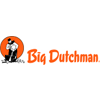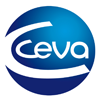…
WPSA
- Details
- Parent Category: ROOT
- Category: IPHF recipients 1988
- Written by Super User
- Hits: 21385
Federico Castelló studied in the College San Luis Gonzaga, in Barcelona and obtained his Bachelorship Diploma in 1914. After doing his military duties from 1915 to 1916, he joined his father at the School, at that time including the activities of "Granja Paraiso", also founded in 1896 and used as a demonstration commercial farm for the students.
In this way, from a very young age, Federico Castelló, collaborating with his father as well as three younger brothers, was in a position where poultry science and practice worked together in order to improve the poultry husbandry methods used at the beginning of this century.
He attended the first World's Poultry Congress - The Hague, 1921 - and last one, the fourteenth, in Madrid, 1970. He collaborated with his father in the organization of the second World's Poultry Congress, in Barcelona in 1924. However, the big personality of Professor Salvador Castelló did not allow the work done by his sons to be manifest.
Up to 1950 the poultry courses at the School were given mostly by his father, but Federico Castelló gave some practical lessons and training to the students. He collaborated also with Professor Salvador Castelló in some books and journal articles, mainly in editions of the first poultry magazine published in Spanish, "Avicultura Práctica" - 1896 to 1920 - and other magazines also published later by the School: "Mundo Avicola" - 1922 to 1936 - and "Temas Avicolas" - 1941 to 1959.
When his father died in February 1950, the business was split in two: the commercial farm, to be owned by Enrique Castelló and the School, by Federico Castelló. In this way, commercial activities of the farm were separated from those of the School which concentrated more actively on the same aims as the WPSA, namely research, education and extension.
From 1950 to 1958 the activities of the School, under the Direction of Professor Federico Castelló, were concentrated on teaching, the publication of the magazine "Temas Avicolas" and a new consultancy service. Federico Castelló never kept any information or knowledge that could be used for his own profit and, whether inside or outside the classroom, his objective was to explain the most complicated matters in ways that could be easily understood by everybody.
Subjects dealt in "Temas Avicolas" are a good example of this. It was an 8-page popular magazine, like a monthly newsletter, produced in Spain during the years when everything was difficult to obtain, from the paper for printing, to the feedstuffs for poultry rations. And Federico Castelló made all efforts to give to the 2,000 subscribers he had the latest technical information in the most understandable way.
during this time he wrote the following books:
- "Dietario del Avicultura", 1st edition in 1951 and other 3 editions, enlarged, in 1953, 1955 and 1957.
- "El nuevo arte de criar gallinas". It was a 282 page book, published in 1956 as a continuation of the 6 editions of a very well known book of his father, "El arte de criar gallinas".
- "Higiene del gallinero", a 332 page book, in 1954.
- "Curso de gallinocultura industrias anexas", a 640 pages textbook for his students, in 1956.
In 1958 conditions changed abruptly when the economic policy of the Spanish Government allowed the importation of foreign strains of birds, as well a soybean meal, US corn and other feedstuffs. Spanish students and poultrymen started to travel abroad in order to learn foreign techniques and Federico Castelló sent immediately - 1958/59 - his son, José A. Castelló, to Penn State University, United States, in order to be able to incorporate the most up to date techniques into the teaching of his School.
In 1959 he started the publication of a new magazine: "Selecciones Avicolas". It became very popular, with a maximum of 5,000 subscribers in 1965, exceeding all other Spanish poultry magazines at that time. Federico Castelló wrote each month the editorial comment, as well as other articles, translating also many articles from foreign magazines.
In 1960 Professor Castelló started also the publication of another magazine: "Boletin Técnico de Avicultura". It was a 32-page monographic publication and the 12 titles published up to 1962 were written almost entirely by him.
Other books published in this time by Federico Castelló were:
- "El nuevo arte de criar gallinas", 2nd edition, 1960 - 438 pages.
- "Avicultura en bateria", in 1960 - 346 pages.
- "Curso de Avicultura", the new edition of the text book of the School. It was published in 1964 and Professor Castelló had the collaboration of his son José A. an Dr Narciso Marcé.
In 1961 the school changed its site from the foundation place opened in 1896. The cost of the new building was met entirely by Professor Castelló, without any Government or private help.
Federico Castelló became a member of the WPSA in the early fifties, encouraging to his son José A. to look at its aims and sending him to the X World's Poultry Congress, held in Edinburgh, 1954. He had a lot of correspondence with the Directors of WPSA at that time, Professor Heuser, in USA, Major Macdougall, UK, and others in order to establish a Spanish Branch. This Branch was founded in 1961, Professor Castelló the senior member of it.
Federico Castelló was an active writer in several Spanish poultry publications, including "Avicultura Técna", "Granja", "Avicultura Espanola", "Calendario del Payés", etc. He also gave many lectures, attending National Congresses and Meetings.
After the nomination of Spain to hold the XIV World's Poultry Congress, when the Organizing Committee was formed Professor Castelló was invited to join the Economic Subcommittee. From 1967 to 1970, being over 70 years old, he traveled very frequently to Madrid for his duty.
His working capacity was tremendous, giving always an example to his collaborators and to his students. He died from a heart attack on the 4th May 1973, three days after he had given his last lesson to his students.
Nominated by Spain


































